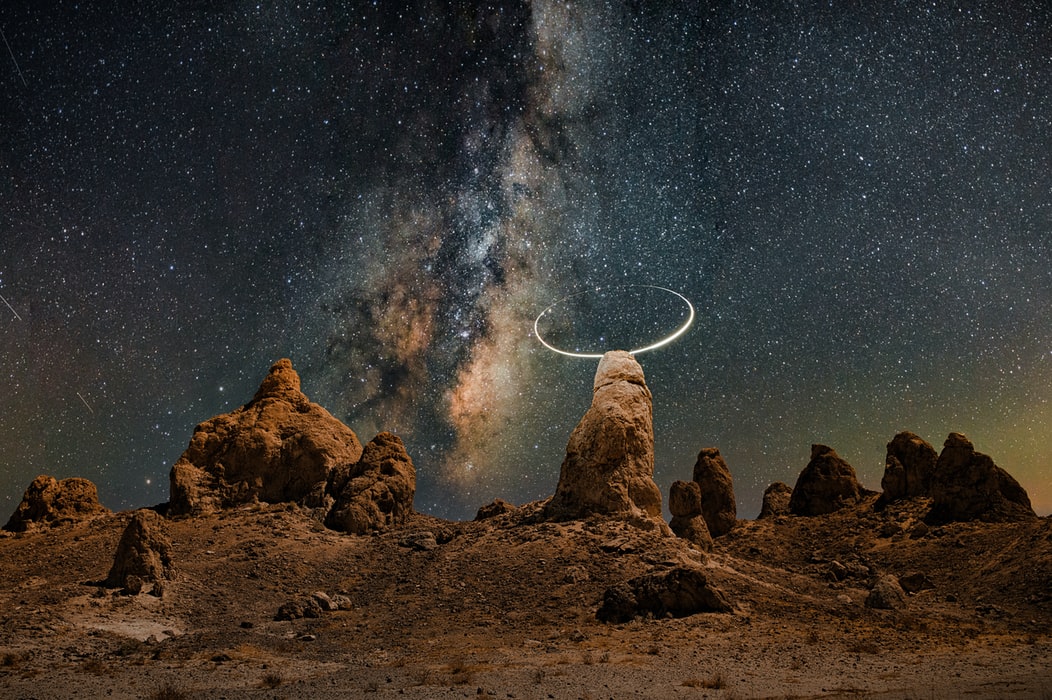
As UFO interest reaches unprecedented heights, a favored theory about their origin presents new challenges for scientists.
Few would dispute the fact that UFOs have undergone a renascence in public interest in recent years. According to recent data, it also appears that more Americans now seem willing to entertain the possibility that these aerial mysteries could represent a phenomenon unrecognized by science.
A recent Gallup survey found that while half of Americans remain skeptical about UFO sightings, that number has dropped ten points since 2019, when similar surveys found that 60% of Americans had reservations about the idea that UFOs could have anything other than earthly explanations.
One thing the new Gallup data seems to convey is the impact recent U.S. government involvement in the longstanding UFO question has had on public opinion. The presence of unidentified aerial phenomena, or UAP as the military prefers to call them, were seemingly confirmed with the release of a nine-page preliminary assessment in June by the Navy’s UAP Task Force (UAPTF), which reported 144 cases involving objects of unknown origin observed by military pilots and others that currently remain unexplained.
Most of these incidents were collected following the institution of a formalized reporting mechanism by the Navy in 2019, the same year previous Gallup surveys found more than half of Americans remained skeptical about possible extraterrestrial origins of such objects. In late 2020, the U.S. Air Force followed suit, with the combined Navy and Air Force data constituting the majority of the reports discussed within the Task Force’s assessment delivered to the Office of the Director of National Intelligence (ODNI) at the end of June.
According to the report, additional information is also being provided by several other agencies, including the FAA, who in recent days confirmed in a statement provided to The Debrief its own role in documenting UAP incidents that can be corroborated with radar or other data on behalf of the UAPTF. Notably, the inclusion of data from the FAA would seemingly indicate that some incident reports from civilian pilots are also among the 144 incidents the UAPTF has currently examined.

In the days since the report’s delivery to the ODNI, several news outlets have tried to reign in on the subject’s current widespread appeal. Just days after the delivery of the UAPTF’s preliminary assessment, the New York Post Editorial Board called out most of the recent UFO “news” in advance of the report as clickbait, aimed at cashing in on widespread interest in the subject, rather than contributing anything meaningful to the ongoing discussion.
“Yes, UFOs and ‘little green men’ are fun and have inspired tons of entertaining fiction,” the Post editorial read. “But the US intelligence community was entirely right to dump all over the conspiracy theories and ‘They’re really out there’ nonsense in its report on sightings of unidentified aerial phenomena (UAP).” Although the Post Editorial Board noted that extraterrestrial sources were not specifically ruled out in the June report, “it also provides zero evidence supporting alien theories.”
More recently, The Guardian noted that people’s current UFO fascination is primarily “rooted in hope,” while elsewhere The Washington Post Magazine argued what it labels the current “UFO mania” simply has to end.
As the recent Gallup data helps show, it’s no wonder UFOs have been on the minds of so many Americans lately. Thanks in large part to the anticipation ahead of the UAPTF report’s delivery to the ODNI, during the first half of 2021 UFOs have seen more consistent, serious media attention than they have in decades. As a byproduct of this, the New York Post correctly notes that many outlets appear to have jumped on the UFO bandwagon in order to claim their share of traffic from all the attention the subject has received. It is a trend that has been slowly building since late 2017, following a New York Times article revealing the existence of the Pentagon’s Advanced Aerospace Threat Identification Program (AATIP), which analyzed aerial phenomena that might pose a challenge to national security.
However, there is something else the recent Gallup data reveals about people’s attitudes toward UFOs. Since 2019, Americans appear not only to have softened their skepticism toward the subject, but also appear more willing to accept the idea that the phenomenon might represent evidence of extraterrestrial technology. In the recent survey, 41% of adults in America now also associate their belief in UFOs with extraterrestrial spacecraft, representing an eight-point rise from 2019 when similar surveys found just 33% of Americans held such views.
And some scientists think this could represent a problem going forward.
Micah Hanks
No comments:
Post a Comment
Note: Only a member of this blog may post a comment.